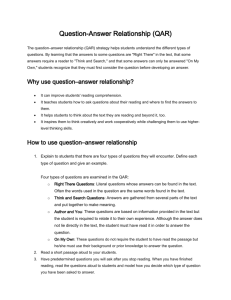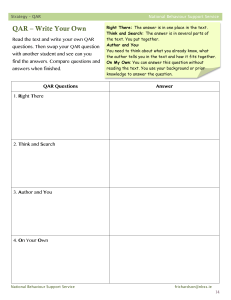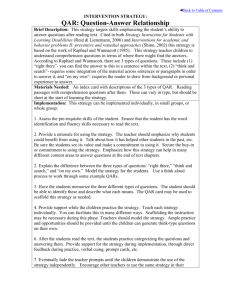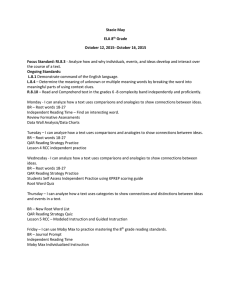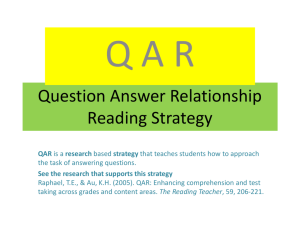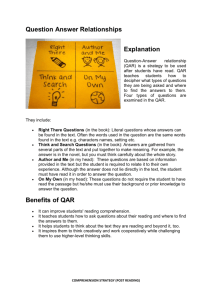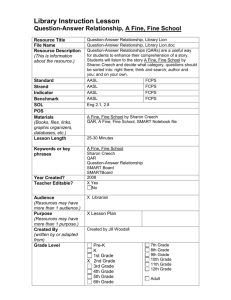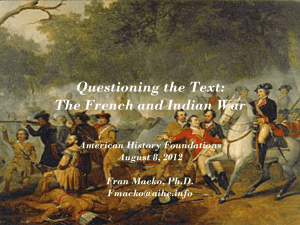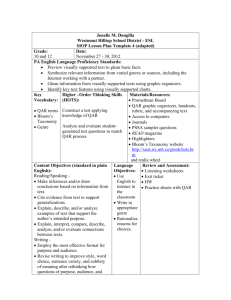Question Answer Relationship (QAR) Description
advertisement
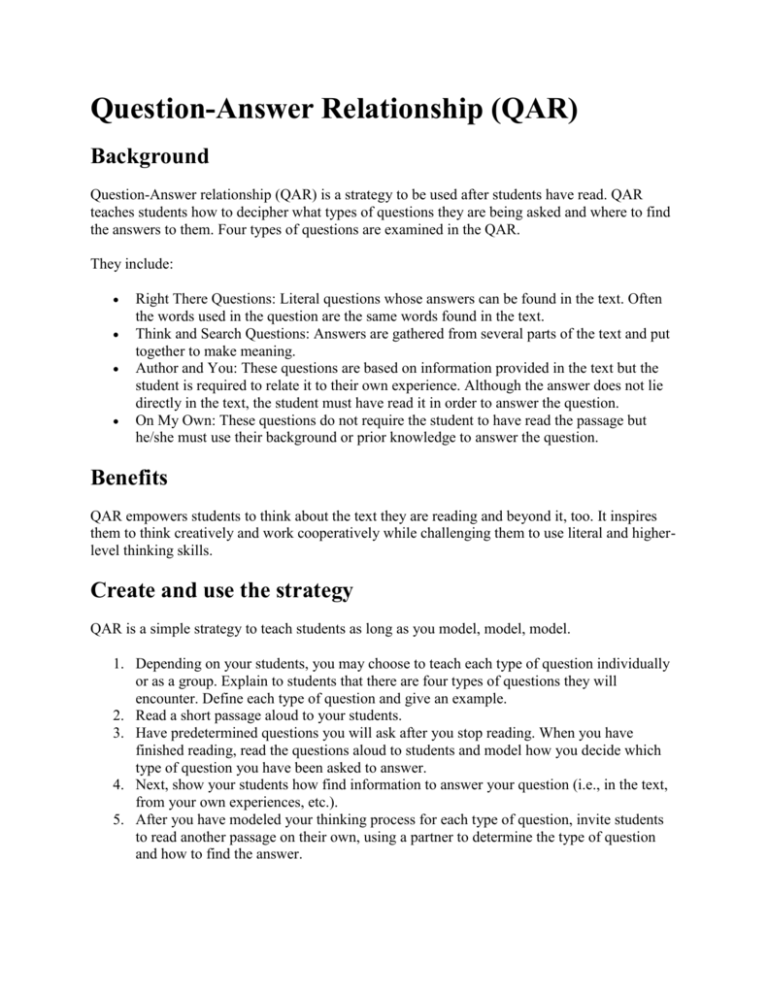
Question-Answer Relationship (QAR) Background Question-Answer relationship (QAR) is a strategy to be used after students have read. QAR teaches students how to decipher what types of questions they are being asked and where to find the answers to them. Four types of questions are examined in the QAR. They include: Right There Questions: Literal questions whose answers can be found in the text. Often the words used in the question are the same words found in the text. Think and Search Questions: Answers are gathered from several parts of the text and put together to make meaning. Author and You: These questions are based on information provided in the text but the student is required to relate it to their own experience. Although the answer does not lie directly in the text, the student must have read it in order to answer the question. On My Own: These questions do not require the student to have read the passage but he/she must use their background or prior knowledge to answer the question. Benefits QAR empowers students to think about the text they are reading and beyond it, too. It inspires them to think creatively and work cooperatively while challenging them to use literal and higherlevel thinking skills. Create and use the strategy QAR is a simple strategy to teach students as long as you model, model, model. 1. Depending on your students, you may choose to teach each type of question individually or as a group. Explain to students that there are four types of questions they will encounter. Define each type of question and give an example. 2. Read a short passage aloud to your students. 3. Have predetermined questions you will ask after you stop reading. When you have finished reading, read the questions aloud to students and model how you decide which type of question you have been asked to answer. 4. Next, show your students how find information to answer your question (i.e., in the text, from your own experiences, etc.). 5. After you have modeled your thinking process for each type of question, invite students to read another passage on their own, using a partner to determine the type of question and how to find the answer. 6. After students have practiced this process for several types of questions and over several lessons, you may invite students to read passages and try to create different types of questions for the reading. Notes: Students may work by themselves, in pairs or small groups. Remind students that they should be prepared to discuss and debate their reactions to the questions and how they figured out their answers. QARs require students to activate both literal and critical thinking skills. For students who have a hard time thinking beyond the text, this will be a challenging task and will require a lot of time to apply to their own readings. These students will need consistent practice in determining the type of thinking the text is requiring them to do.
